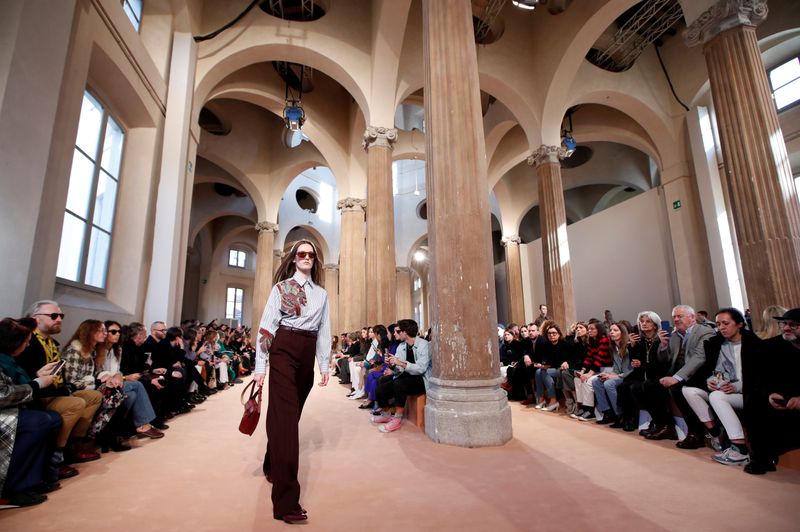This post was originally published on this site
https://i-invdn-com.akamaized.net/trkd-images/LYNXMPEG3F1ZP_L.jpg
“Fashion is a seasonal industry, and certain dates are not compressible. Not reopening shortly would mean giving up almost a year’s turnover,” said Carlo Capasa, the chairman of Italy’s National Fashion Chamber (CNMI), in an online interview on the website of daily Corriere della Sera.
Current lockdown measures in Italy – the country with the third highest number of confirmed cases after the United States and Spain – have been imposed until May 3.
The government has not disclosed how and when it will start easing a nationwide ban on business activities deemed as non-essential.
Fashion and textile plants throughout the country have shut as they do not fall into the category of essential businesses.
Many labels have reconverted production to make medical devices such as masks and medical overalls to meet rising demand during the emergency.
With a turnover of 95 billion euros ($98 billion) and 600,000 workers, Italy’s fashion and textile industry is the second most important nationwide.
It accounts for a 41% share of the sector in Europe, followed by Germany, which represents 11% of the total.
Capasa suggested April 20 as a date to gradually reopen manufacturing activities in order to deliver fall/winter collections on time to shops around the world, and start production of spring/summer collections.
“We are closed, but other countries like France, Spain, Portugal, Turkey are starting to reopen” said Claudio Marenzi, who is in charge of fashion at business lobby Confindustria, pointing out that the ban also had implications for Italy as a supplier.
“This means that some brands may decide to switch to another supply chain, which in Italy is mainly made up of small companies. And once a company closes, you lose the know-how and you never recover,” he added.
Confindustria Moda represents 65,000 companies in the textile, fashion and accessories sectors. Most are small firms with only 15-20 employees, with sales highly dependent on foreign buyers.
Marenzi said Confindustria Moda had signed an agreement with unions over stringent health and security measures to adopt at production sites once these are allowed to reopen.
“(The deal) shows that entrepreneurs and workers are aligned in their will to restart activities and save the Italian fashion industry,” he said.
“An economic epidemic could cause more lasting damage than the health one. If we have to live with this virus for so long, then let’s live with it,” Marenzi said, adding that if the industry could safely make masks and gowns, it could also make clothes.

